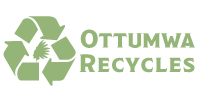Reducing waste requires people to think of efficient ways to prevent trash and household hazardous waste from ending up in the garbage can. Garbage is inevitably buried in the landfill to never be used again.
For starters, avoid buying and using disposable items like paper products, straws, and single serving containers. Another habit you should highly consider is to use products that will not harm human health and the environment. Using natural non-toxic cleaning products will limit the amount of chemical production in a home, which prevents health and environmental problems. Incorporating these simple waste reduction habits is the best way to decrease trash disposed of in landfills keeping our homes and environment healthier too.
Some tips
- Pack lunch or a snack that won’t require you throw anything away.
- On average, a household contains about 100 pounds of toxic materials.
- Turn in household hazardous waste during a Solid Waste District collection.
- Avoid buying cleaning products that contain hazardous substances.
- Compost yard and food waste to decrease your trash and prevent loss of nutrients.
Reuse
Taking care of your possessions and/or doing routine maintenance allows the longevity of your good to be much higher. For example, apply grease on your bicycle chain or cleaning out the crumbs from your keyboard. Sew those holes up in your jeans instead of buying brand new ones. Not only will you save money, you will develop creative problem-solving skills all the while creating less trash.
Tips
- Help others by reusing unwanted items through donations to churches or nonprofit organizations
- Look up community organizations that accept unwanted items
Recycle
Recycling involves collecting, processing and selling products made from old materials. For example, a recycled plastic soda bottle is chipped, melted and made into fiber, which becomes a jacket or sleeping bag stuffing. The old material in a new product is called recycled content. Some products, like cereal boxes, are made from 100% recycled content from recycled paper. Aluminum cans might only be made from 40% recycled content because the can must be made from some bauxite to keep it strong.
Step by step on recycling process:
-
- Paper is collected from residents through curbside and drop-off programs.
- Paper is then sorted by type and contaminates are removed.
- Paper is baled.
- Paper is mixed with water in hydropulper for several hours.
- The pulp is poured onto a screen and then dried and rolled.
- The rolled paper is then made into new paper products.
